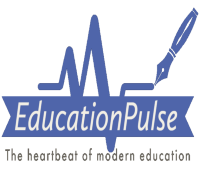| The 6 Academic Writing Assignments, Jim Burke |
| Overview | Jim Burke’s most recent book focuses on reconceptualizing writing assignments from a different point of view, one that takes into account not only our students’ needs, desires, and interests, but also design elements that makes writing assignments clear, readable, and accessible for all of our students. Students are “users” of course materials, assignments, content, etc., and teachers are designers of that user’s journey. Our responsibility, as designers, is to remove any obstacles that come between our students and their learning process. |
| Objectives | Burke argues that all writing assignments must satisfy the “Academic Writing Assignment” Framework: - Anchored in clear goals linked to specific standards
- Grounded in texts that are as engaging as they are demanding
- Cognitively demanding relative to the standards and the students
- Emotionally and intellectually engaging to all students
- Designed to support students
- Assessed or evaluated according to criteria and requirements that are clearly stated up front
- Written and formatted for maximum readability and ease of use
|
| Directions | The Six Academic Writing Assignments - Writing to Learn (WTL)
- “We design WTL assignments as conversations we want students to enter into with themselves as part of the process of shaping their intellectual and academic identity” (13).
- WTL tasks include: (1) reflection, (2) practice of craft, (3) collaborative conversations, (4) note-taking, (5) informal demonstrates of understanding, (6) misc. notebook writing
- Short Answer (SA)
- “One question the short-answer assignment demands we ask is: Why should we have students write at all if we can achieve the same end, gain the same insight into student performance, through multiple choice questions […] What does writing do that such machine-scored multiple-choice questions cannot?” (62).
- SA tasks include (1) rhetorical precis, (2) listener’s notes, (3) author’s notes: says-means-matters, (4) questions for close and critical reading.
- Writing on Demand (WOD)
- “WOD is as artificial as it is essential to our students’ academic writing success […] If they cannot achieve some degree of confidence and competence when it comes to WOD assignments, those students we worry about most will be denied the opportunities that come to those who can do well on the SAT or ACT” (66).
- WOD tasks include (1) summer reading in-class essay, (2) independent reading in-class essay, (3) whole-class novel in-class essay, (4) simulated research.
- Process Paper
- “A process paper, however, provides us with the context and time we need to teach and improve writing; without the process paper in our curriculum, we are only assigning writing or using it to assess students’ understanding of texts they read” (84).
- Process Paper tasks include (1) literary analysis, (2) structural analysis, (3) critical theory or rhetorical analysis.
- Research Paper
- “Writing a major paper, which I will say is five pages (1,500 words) or longer, serves as a crucial stage in the formation of a student’s intellectual and academic identity” (111).
- Research Paper tasks including (1) traditional research, (2) I-Search papers, (3) multi-genre research papers, (4) “Expert Project” or “Genius Hour.”
- Alternative Forms of Academic Writing
- “[W]hat initially seem to be nonacademic forms, such as proposals, letters, memos, executive summaries, multimedia slide sets, podcasts, blogs, and infographics [have the] potential to accommodate academic moves, thinking moves, the moves students need to make as writers who, in an increasingly fluid communication landscape, must be able to use an ever-increasing array of tools to communicate their ideas and arguments” (137).
- Alternative Forms of Academic Writing include (1) surveys and data analysis, (2) presentations, (3) executive summaries or reports, (4) letters, (5) proposals.
|
| The 6 Academic Writing Assignments, Jim Burke |
| Guidelines | Burke argues that the design of an assignment sheet is as important as the instructors of the assignment itself. Assignment sheets must be explicit and well-designed in order to remove “friction points” from the student-as-user. Burke’s Example: This paper should: - have 6 paragraphs: 1 introduction, 1 conclusion, and 4 paragraphs written in response to the novel as we read it (all of which should be related to the same idea)
- be double-spaced, use 1-inch margins and a 12-point font, and be formatted in a serif font (use Cambria, not Calibri, which is a sans-serif font), with a header formatted with the page number and your name in the upper-right corner
- include textual evidence in the form of direct and indirect quotations, each one properly cited in the text (according to the BHS MLA 8th Edition Style Guide)
- display your name, my name, the period, and the class on first page, left-justified
Burke uses checkbox-style bullets to give students a visual checklist of elements they need to consider and include in their essays. The assignment sheet must function as a roadmap that clearly explains how students will complete the assignment. |
| Assessment | Burke alternates between using department-wide rubrics and his own standards-based assessment. Example: Your essay will be evaluated based on your performance in the following areas: M = Missed the Standard S = Satisfied the Standard E = Exceeded the Standard |
| M | S | E | |
| | | | Introduce your subject and your motivation for writing about it |
| | | | Summarize the author’s main idea or argument. |
| | | | Make a connection to your previous IR books/primary research findings. |
| | | | Acknowledge and address alternate/opposing views. |
| | | | Draw conclusions about the meaning and importance of the book’s claim(s). |
| | | | Prove that you read, understood, and thought about the book. |
| | | | Proofread and revise as time allows for correctness. |
| | | | Satisfy the requirements listed above to the best of your ability. |

